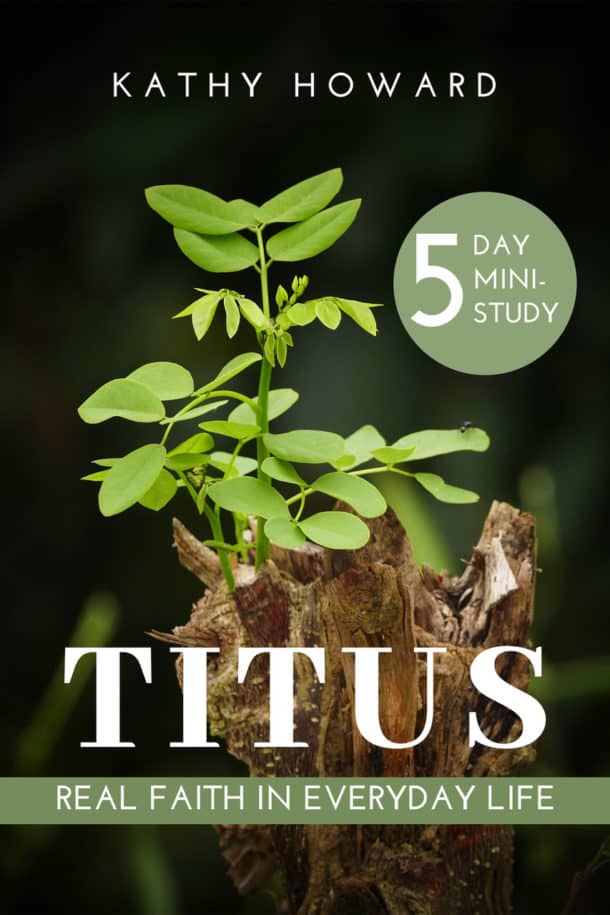
Maybe you’ve heard the term “inductive Bible study” but aren’t exactly sure what it is. Or maybe you’re familiar with the meaning but have never used this method to study the Bible before. This post will define the term, explain the goal, describe the process, and show you some variations. Ready?
What is Inductive Bible Study?
“Inductive Bible study” is a simple, but reliable, three-step approach to properly understand and apply God’s truths from Scripture. Inductive study sets aside any preconceptions or prior assumptions we may have and simply starts with the evidence in the biblical text. This God-driven approach keeps the focus on God. There are quite a few variations of basic inductive study (see below) that keep the same focus and general approach. But there are also other approaches to Scripture that sadly often miss the point. (For more on this see “Do You Read the Bible All Wrong?” For a more detailed discussion of Inductive Bible study see this “Step-by-Step Guide.”)
What is the goal?
Every verse in the Bible has ONE original meaning. That’s the one God gave it when He inspired it to be written. Yes, there is endless specific applications to our individual lives, but only one meaning. Our goal as students of the Bible is to understand that meaning through proper observation and interpretation. In that process we will discover eternal truths and timeless spiritual principles. Those truths and principles can be applied to our lives in infinite ways. God’s unchanging truths are relevant for every situation and circumstance of our lives. To sum it up, our goal in Bible study is to learn God’s truth and allow Him to use it to make us more like Jesus. (You might also like “How Jen Wilkin Teaches Women to be Transformed by Scripture.“)
What is the process?
Basic inductive Bible study is a three-step process:
- OBSERVATION – Before we can know what a passage means, we must see what it says. We do this through careful observation of the biblical text. We act like investigative journalists who ask questions that start with words like “who, what, when, where, and how.” We look for things like facts, word pictures, commands, repeated words and phrases, contrasts and comparisons. I record my observations in the extra-wide ruled margin of the journaling Bible I use, but you can also use a notebook or journal. (For more about observing a Bible passage see “10 Observation Tips for Better Bible Study.“)
- INTERPRETATION – After we’ve done the work to see what a passage says we can use solid interpretation principles to understand God’s one meaning. First, reflect on your observations. For instance, in John chapter 1, the author used used the words “light” and “life” repeatedly (keywords!) to describe Jesus. That’s significant. What truths about Jesus does the repeated use of those words indicate? Second, there are some guidelines we must keep in mind as we seek to determine God’s meaning. For instance, the literary genre of the book and the historical, cultural, and textual context all help shape our understanding. (For more on these guidelines see “4 Tips to Help You Understand the Bible.”)
- APPLICATION – the Bible study process is not complete until we have applied God’s truths to our lives. As I mentioned above, the application of God’s truth is endless. But, Paul gave us some broad categories for application in his letter to Timothy that’s a good place to start. (See “4 Ways to Apply Scripture to Your Life.”)
What are some variations?
I teach a method of Inductive Study I call the “4 R Method.” I find the “4 Rs” memorable and I like the alliteration! The 4 R Method leads the student to read, record, reflect, and respond. The “read” step is the one not specifically indicated in basic inductive study, but we do have to read the passage! The 2nd through 4th Rs correspond to observation, interpretation, and application. (See “The 4 R Bible Study Method” for a breakdown of this method or learn how with “Video Teaching on the 4 R Bible Study Method.“)
I’ve seen solid inductive Bible study “packaged” in other various ways to make it more memorable or to make it easier for the Bible study to follow. As long as the study method seeks to find God’s meaning and follows the basic steps of observation, interpretation, and application it could be a good method to use.
For instance, I’ve seen the S.O.A.P method. The acronym stands for Scripture, Observation, Application, and Prayer. Although it doesn’t specifically mention “Interpretation,” I think it’s implied.
The H.E.A.R. method leads students to highlight, explain, apply, and respond. This method seems to more closely reflect the inductive Bible study method. “Highlight” is the observation step, “explain” is the interpretation step, and “apply” is the application step.
The way you package the method is not nearly important as the method itself. Just remember, we must first observe what the text says, so we can interpret what it means, so that we can apply it to our lives.
Getting Started with Inductive Bible Study
Once you have a grasp of the basic process you can use the inductive study method with any book or passage in the Bible! With just a few solid study tools you can confidently engage in Bible study on your own. Just pick a Bible book and get started.
However, if you’d like a little help and direction there are lots of great resources. Here are just a few:
- The Deep Rooted devotional books – I’ve written a series of “meaty” devotional books (more like a Bible study, devotional hybrid!) formatted around the 4 R Bible study method. Each one guides you through a book of the Bible and helps you use the inductive method to study it. Check out Mark, Acts, or Romans on Amazon. By the way, the Deep Rooted Journal and Deep Rooted Hebrews are coming soon!
- “Reading the Bible Together” – In this Facebook group for women we use the 4R Bible study method to read through and discuss one Bible book at a time. You can jump in any time! To join, follow this link, request to join and answer the three easy questions.
- Other resources – There are so many great Bible teachers out there who can help you learn how to do solid Inductive Bible Study. For instance, check out “Women of the Word” by Jen Wilkin, “Growing Up” by Robby Gallaty, and the awesome BibleStudyHub community led by Katie Orr.
I’d love to hear from you! What method of Bible study do you use now? Have you ever tried inductive Bible study?


Titus Bible Study
Join Kathy's mailing list to receive a free mini Bible study on the book of Titus.
Success! Check your inbox for the download link.